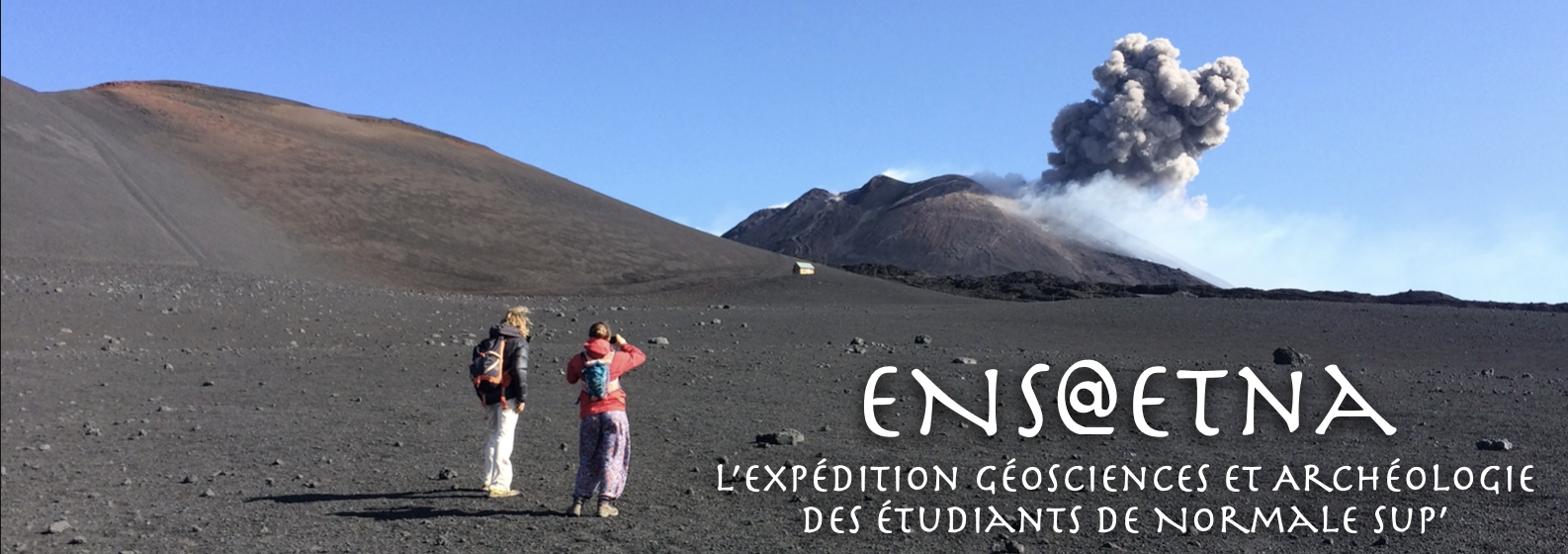Organised in 2019 entirely by students from the Geosciences and Antiquity sciences departments, the field work was not created ex nihilo that year, and had a long story with the Geosciences department.
Once started by Pierre Briole in 2011, the volcanology field work in Sicily has been for several generations of Geosciences students a great introduction to volcanology directly on Mount Etna. CNRS Researcher at the Geology laboratory in ENS and with a strong field experience in Sicily, Pierre welcomed each year until 2019 first-year students with his
Italian fellows from the National Institute for Geophysics and Volcanology (INGV).
These introductions to research through fieldworks rose vocations for current PhD students in volcanology, such as Luca Terray (Geosciences 2013) or Delphine Smitarello (Geosciences 2012). They also allowed tight and fruitful contacts with Italians scientists, who still participate to the project this year, and continue to present their research subject directly on the field. Although initially centered on Geophysics and solid Earth, the course already encompassed several specialities, such as volcanology, tectonic, geology or seismology.
Pierre Briole himself got to know Sicily and the Etna during his civilian service, to get back and study them later as a scientist. He notably designed the first inclinometer network around the Etna, the most active european volcano. Also former director of the Geosciences department, ENS published an interview of him in 2010.
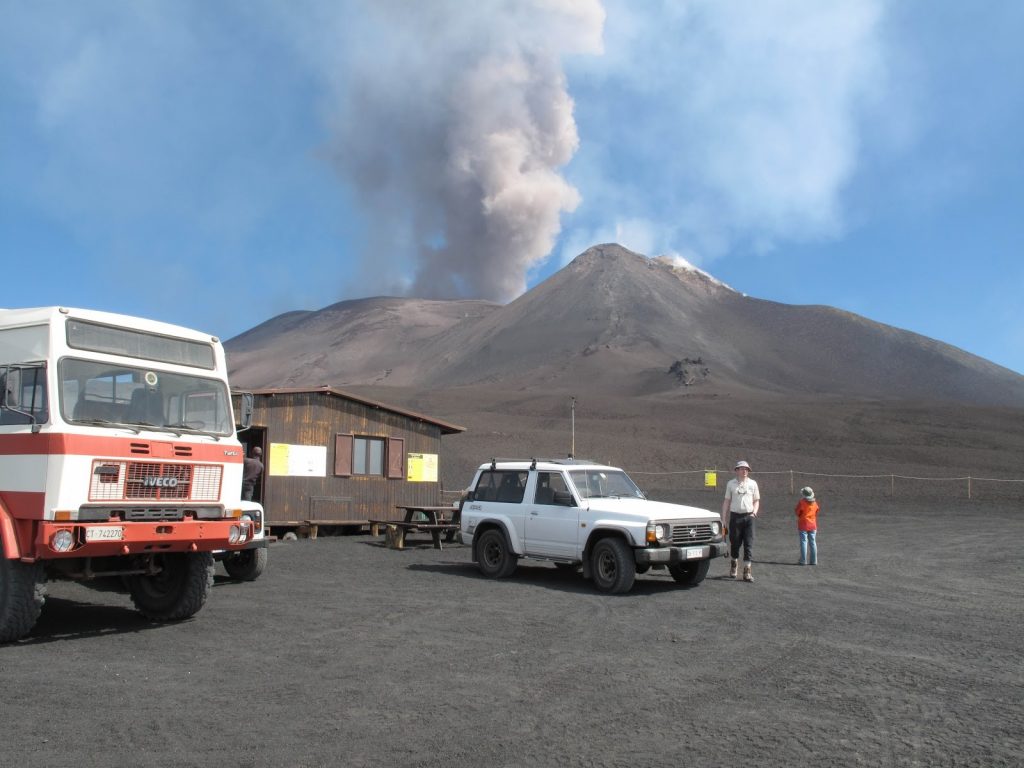
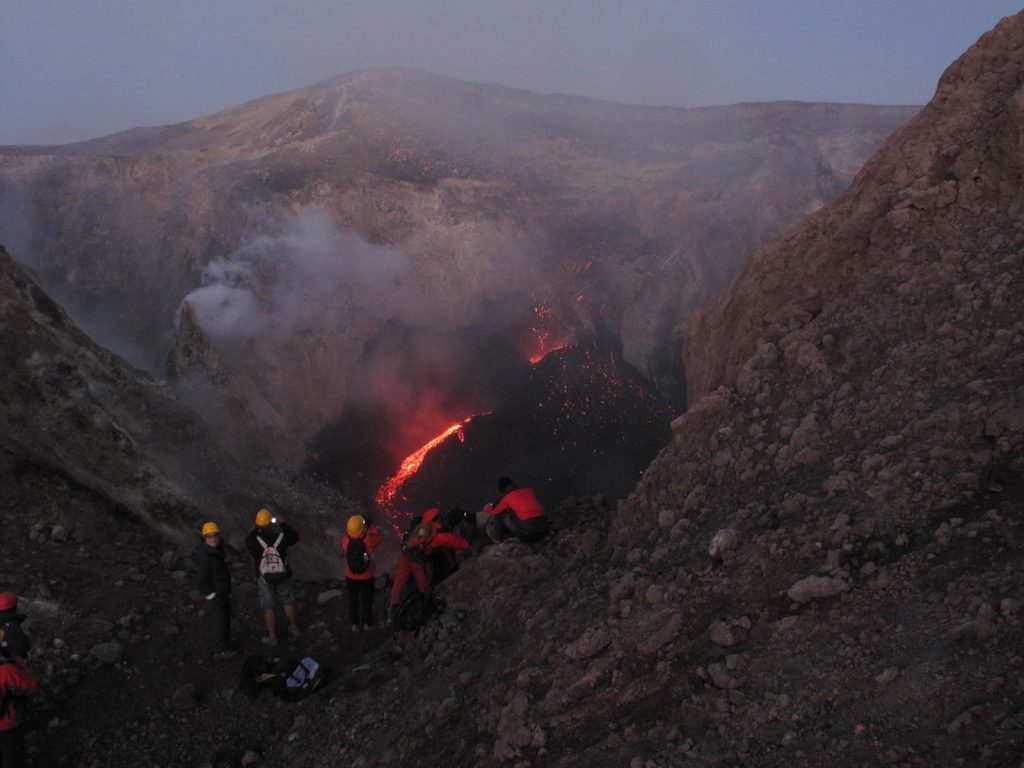
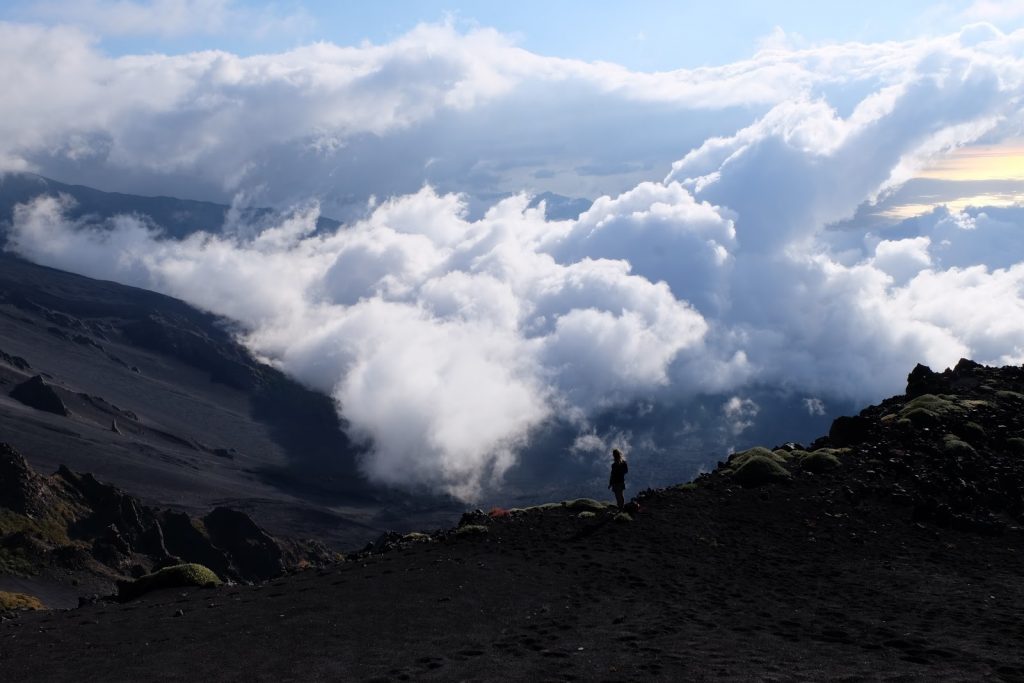
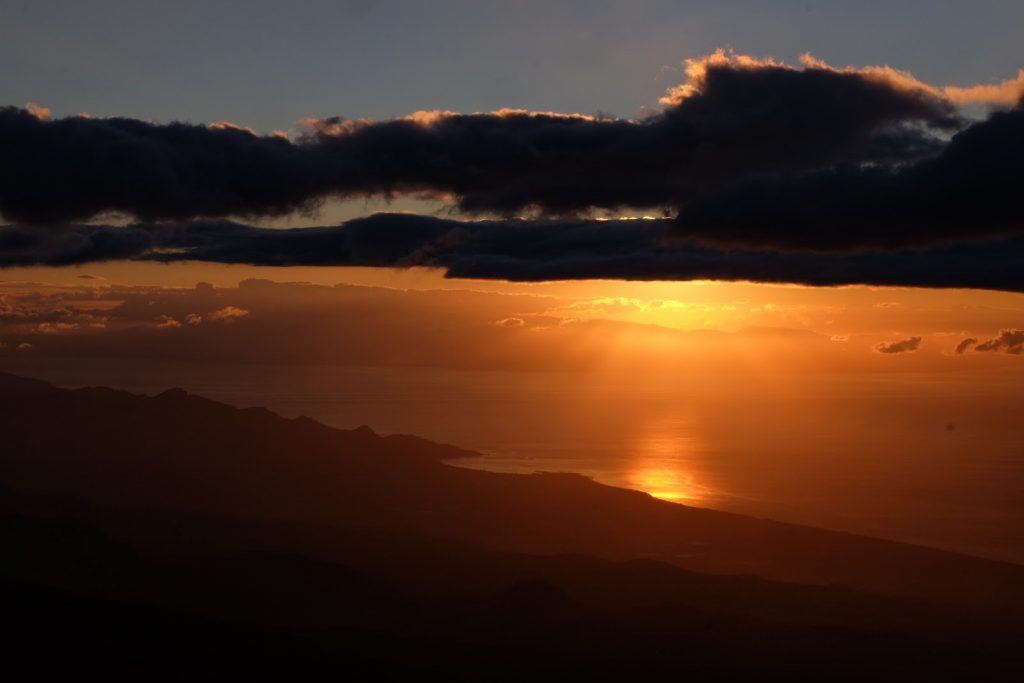
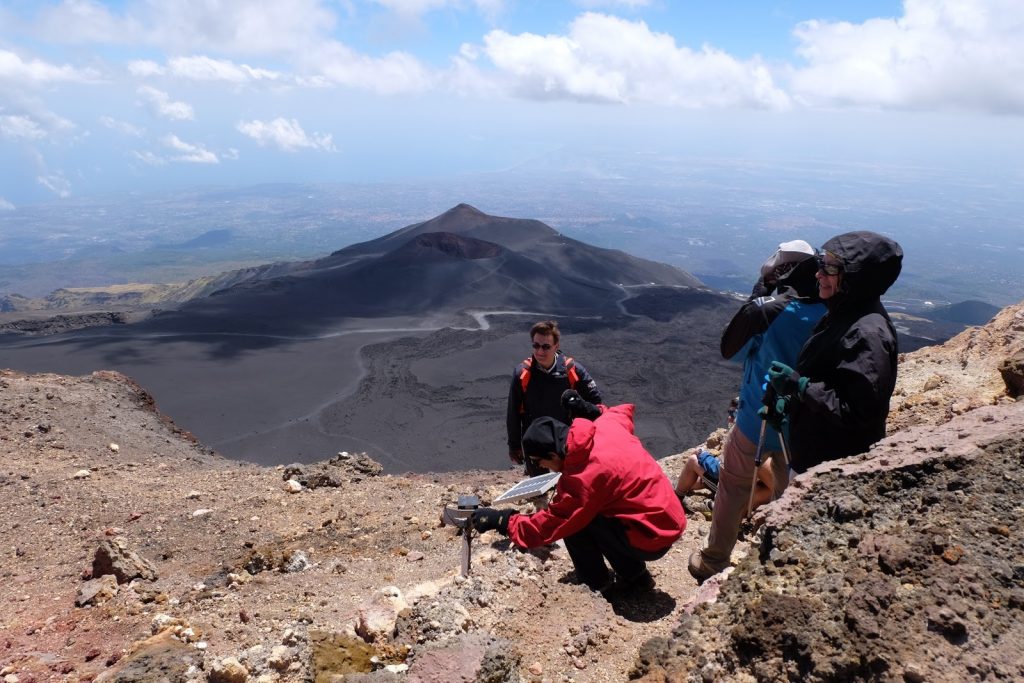
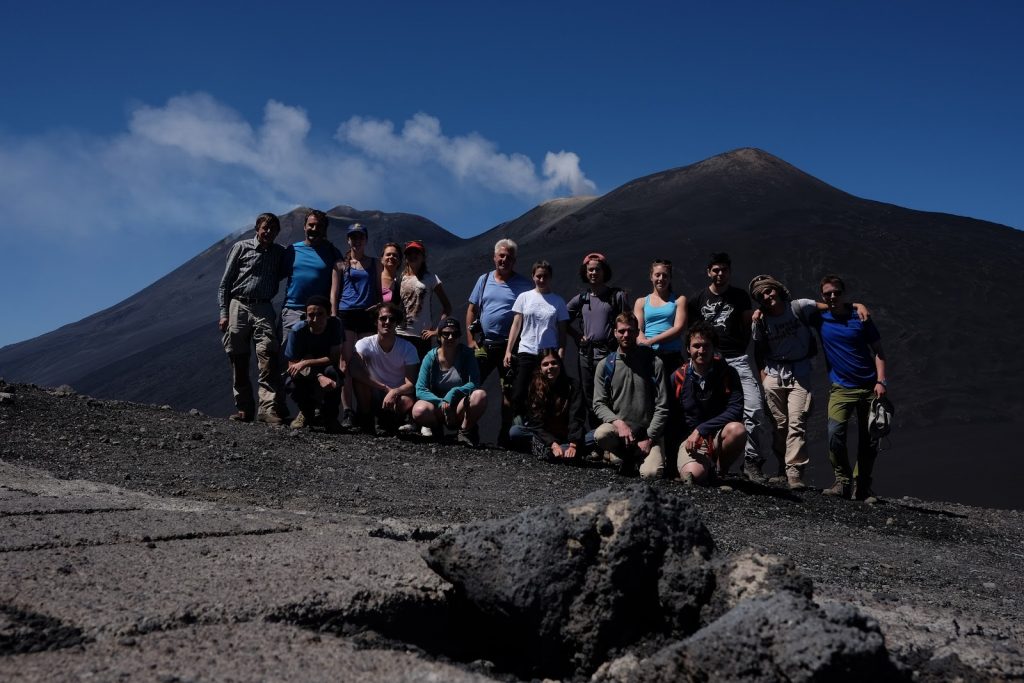
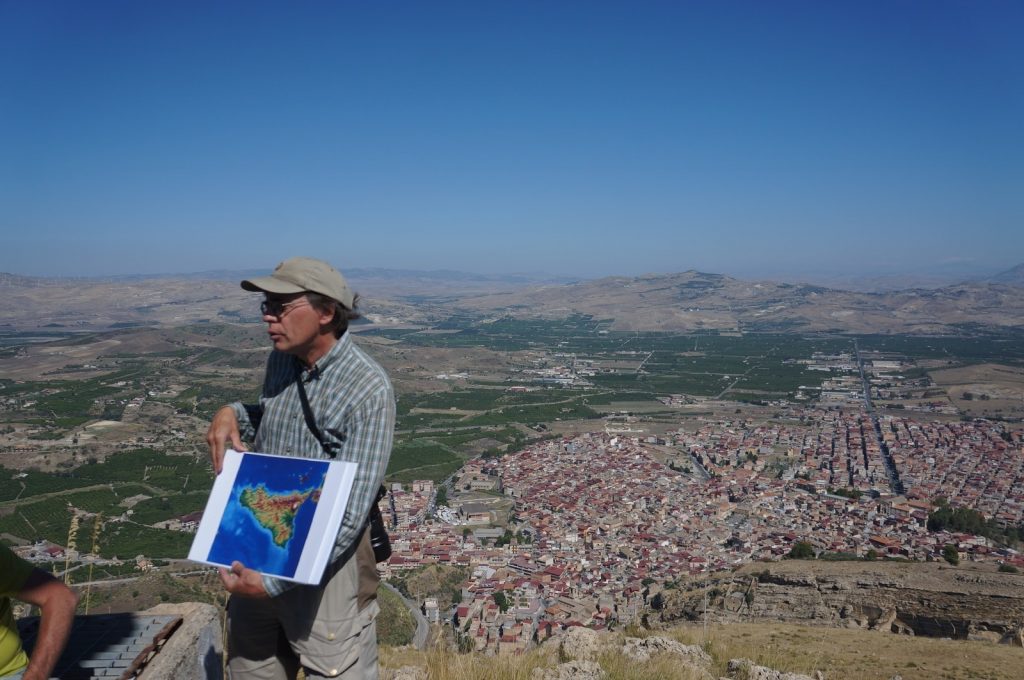
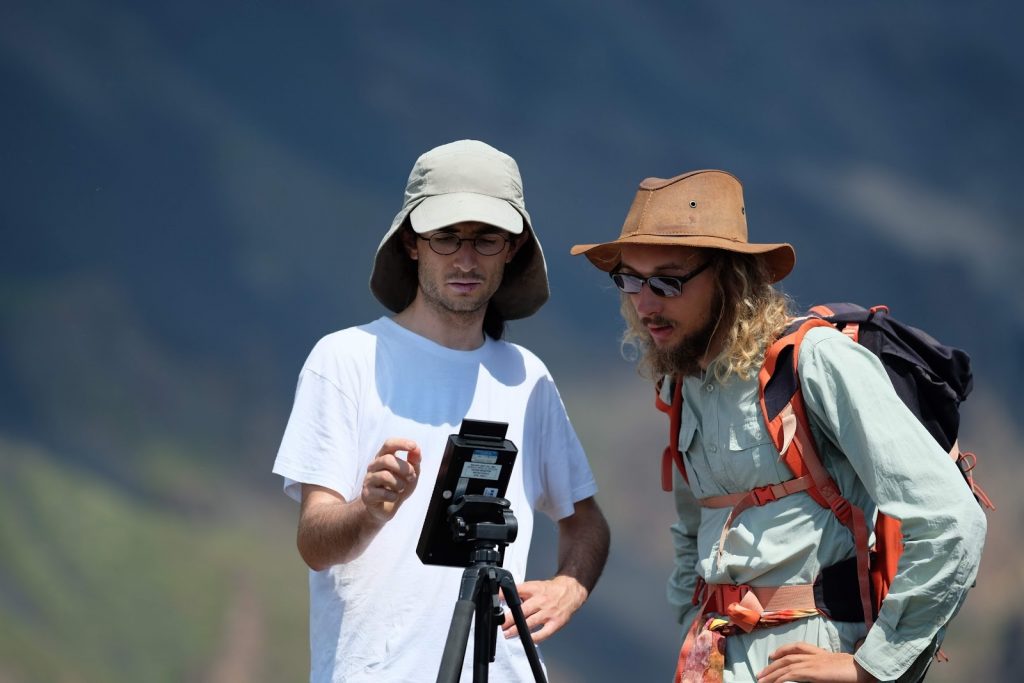
With the years, the course added several presentations and participants, for example with the geology excursion to the Hyblean mountains (Monti Iblei) thanks to Eric Barrier, Geology professor at UPMC (Paris) but also specialist of sicilian geology.
Each expedition had its own adventures. For example in 2012, the group was very busy studying an ongoing eruption with fresh lava ; in 2017 summit access was blocked due to an other fresh lava flow in March of the same year.
Last but not least in 2018, students partly organised the program, producing a documentary on the inhabitants life on the Etna. Beyond a simple volcanic system, interviews with the inhabitants and people from Catania showed how they live, next to this active giant. An active volcano they fear but also respect, like a common and maternal entity. The documentary was produced also thanks to the sponsoring of A-Ulm and Geotopo.
Today with this long experience, the project is entirely recovered by the students themselves, and still keeping the fieldwork tradition, it opens the course toward other geoscientific aspects, such as the social ones, and toward archeology. For too long the previous expeditions just passed through the Hybleans mountains without having the time to stop at archeological sites, hence three full days in these region in 2019 and a strong participation of Antiquity Sciences students.
